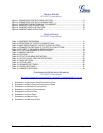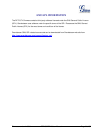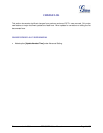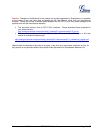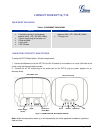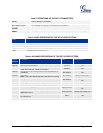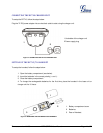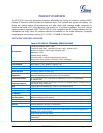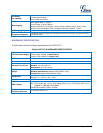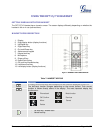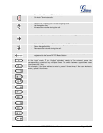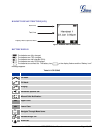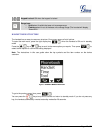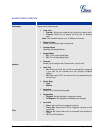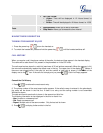
Firmware version 1.0.0.8 DP715/DP710 User Manual Page 12 of 52
PRODUCT OVERVIEW
The DP715/710 is the next generation of powerful, affordable, high quality and simple to configure DECT
Cordless IP Phone for small business and residential users. Their compact size, superb voice quality, rich
feature set, market leading price-performance and wide range radio coverage enable consumers to
maximize the power of IP voice application and mobility for a minimum investment. The VoIP network
signaling protocol supported is SIP. The DP715/710 is fully compatible with SIP industry standard and can
interoperate with many other SIP compliant devices and software on the market. Moreover, it supports
comprehensive voice codecs including G.711, G.723.1, G.729AB, G.726 and iLBC.
SOFTWARE FEATURES OVERVIEW
Table 5: DP715/DP710 TECHNICAL SPECIFICATIONS
Air Interfaces
Telephony standards: DECT / GAP
Frequency range: 1880 - 1900 MHz (Europe), 1920 - 1930 MHz (US)
Number of channels: 120 (Europe), 60 duplex (US)
Modulation: GFSK
Speech coding: 32 kbit/s
Emission power: 10 mW (average power per channel)
Range: up to 300 m outdoors, maximum of 50 m in buildings
Network Interface
One 10/100Mbps auto-sensing Ethernet port (RJ45) ( DP715 Base Station only)
LED Indicators
Base Station : Power, Network, Register, Call
Handset Display
1.7” 102x80 FSTN LCD with color backlight
Factory Reset Button
Yes ( DP715 Base Station only)
Audio Interface
Handsfree speaker (Handset only)
Voice over Packet
Capabilities
Base Station : Dynamic Jitter Buffer
Handset : Speakerphone with Acoustic Echo Cancellation
Voice Compression
G.711 with Annex I (PLC) and Annex II (VAD/CNG), G.723.1, G.726-32 AAL2,
G.729A/B, iLBC
Telephony Features
Caller ID display or block, call waiting, Flash, blind or attended transfer, forward, hold, do
not disturb, 3-way conference
QoS
Layer 2 (802.1Q VLAN/802.1p), Layer 3 (ToS, DiffServ, MPLS)
IP Transport
RTP/RTCP
DTMF Method
In-audio, RFC2833 and/or SIP Info
IP Signaling
SIP (RFC 3261)
Multiple SIP accounts
per base station
Up to five (5) distinct SIP accounts per system; Independent SIP account per handset;
Multiple handsets per SIP account
Hunting Group
Linear mode; Parallel mode; Shared Line mode
Provisioning
HTTP, HTTPS, TELNET, TFTP, TR-069 (pending), secure and automated provisioning
Security
Security protection: SIP over TLS and SRTP.
Device Management
Web interface or secure (AES encrypted) central configuration file for mass deployment
Support device configuration via built-in IVR, Web browser or central configuration file
through TFTP, HTTP or HTTPS
Auto/manual provisioning system
NAT-friendly remote software upgrade for deployed devices including behind
firewall/NAT
Syslog support



